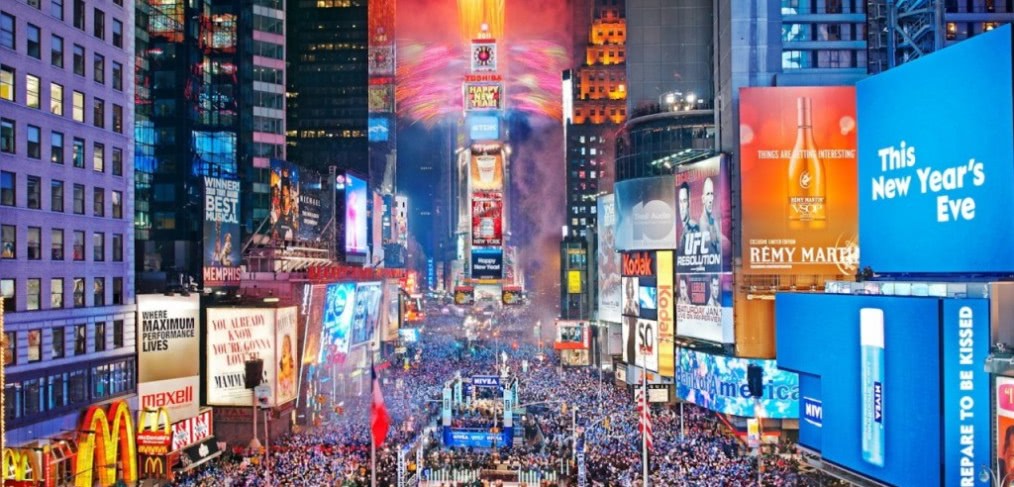
Ten Wishes for Architects
Lance Hosey outlines his New Year’s resolutions for the design industry.
This time of year, market-watchers inevitably size up trends and hand out predictions, and this is no less true among architects. In the past week or two, I’ve enjoyed the prognostications of Adrian Zenere, John Hill, Kaid Benfield, and Lisa Rochon. As an incorrigible list-maker, I admit to eating this up. Yet, unlike Santa Claus, the list-makers usually shy away from deciding what’s naughty or nice, preferring just to point out possibilities and withhold judgment. While it’s useful to focus our lenses in this way, I’d love more of a dialogue about not just what could happen but what should happen. Here’s what I’d like to see in coming years.
KILL CARBON
Corporations currently have at their disposal five times the amount of carbon that could raise atmospheric temperatures to a catastrophic level. If we burn it all too quickly, we’re toast. The building sector represents about half the total US energy consumption, and the American Institute of Architects has adopted the 2030 Challenge, the industry’s leading strategy to achieve carbon neutrality in the next two decades. Architects can no longer claim responsible practice without dramatically improving our leadership in energy and emissions.
DEFINE DESIGN
Business guru Gary Hamel has said that good design is like the Supreme Court’s view of pornography: “We know it when we see it.” How can we practice good design if we can’t say what it is? Architects speak of “inspiration” as if it’s veiled in mystery, a gift from angels to the privileged few, rather than something any competent and dedicated professional can pursue. While being too prescriptive isn’t productive, all design might improve if we had a more rational debate about what’s good and what’s not.
GIVE SUBSTANCE TO STYLE
“Sustainability has, or should have, no relationship to style,” according to Rafael Viñoly, echoing the sentiments of many architects. Yet, as I show in my latest book, The Shape of Green: Aesthetics, Ecology, and Design, form and image can enhance conservation, comfort, and community at every scale of design, from products to buildings to cities. There is an essential relationship between form and performance. We can erase the lines between how things look and how they work.
GO LOCAL
For an agenda driven by environmental sensitivity, green building often lacks contextual specificity. The most popular sustainable design standards are one-size-fits-all templates that tend to produce generic solutions—what I call “corporate green.” Bioregionalism, or bioclimatic design, is one way to resist this tendency, but design can get even more specific, embodying the unique natural and cultural circumstances of a specific terrain.
GET SMARTER
The “Big Data” movement, which finds new ways to collect and sort highly complex information, is fundamentally changing habits in every industry. Architects, trained to rely on intuition, risk becoming dinosaurs, unless we keep up. The past couple of decades have produced a wealth of new research and resources that could utterly improve the value of design if we make it less about personal vision and more about collective intelligence. Less Gehry, more Google.
LEARN BETTER
The fundamental lesson of ecology is that all things are connected, yet education divides topics into separate fields of study and rarely looks at their relationships. Design education in particular needs a wholesale transformation around interdisciplinary thinking if the profession is to live up to its most urgent challenges. We can’t build better worlds if we don’t understand the world better.
PLAY MORE
Every organization devoted to creativity can carve out time for unfettered play. Google’s famous “Innovation Time Off” program requires all its engineers to spend twenty percent of their time working on self-directed projects, and LinkedIn recently adopted this approach. Fee-for-service organizations such as architecture firms may never afford this scale of investment, but the smartest architects do invest.
PLAY NICE
Architecture is a service industry and a team-based practice. Yet, architects aren’t exactly known for their ability to play well with others, which may be why The Guardian recently called our profession “smugly hermetic.” Progress results from open-minded dialogue and exposure to many perspectives. As Ron Ricci and Carl Wiese write in their new book, The Collaboration Imperative, “Good ideas come from anywhere, so the more voices the better.” Diversity breeds innovation. Can we share ideas more graciously?
REDISCOVER THE PAST
The scholarly history of architecture in the West celebrates monuments of wealth and power (temples, churches, museums), which are poor models in an age of diminishing resources. Understanding the inspired examples of indigenous and vernacular traditions cultivates a richer wisdom about how people with limited means can use great ingenuity to embrace place. The igloo attests to the resourcefulness and grace of the Inuit people, living their land for untold generations. We need more igloo ingenuity.
REINVENT THE FUTURE
Architects may be getting better at making better buildings, but we rarely examine the very purpose of buildings in relation to everything else. In The Medici Effect, Frans Johansson offers two kinds of innovation—“directional” and “intersectional.” One brings greater ingenuity to a preexisting field, and the other explores the uncharted territories between different fields. What do we want architecture to become in the future? Is our task simply to improve structures, or is it to create more nourishing environments?
All images via Google

A lot of great points, but those are more like “tips” than “wishes”. My “wish list” for architects would include more reasonable fees, more reasonable time constraints on commercial projects, more credit in the media and society for what architects do, and more realistic budgets for their projects…